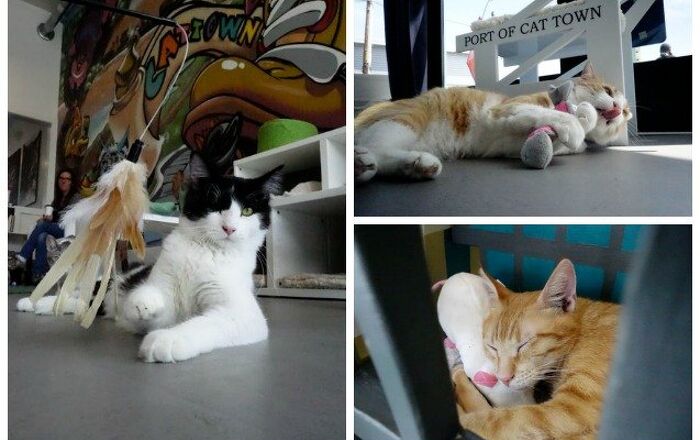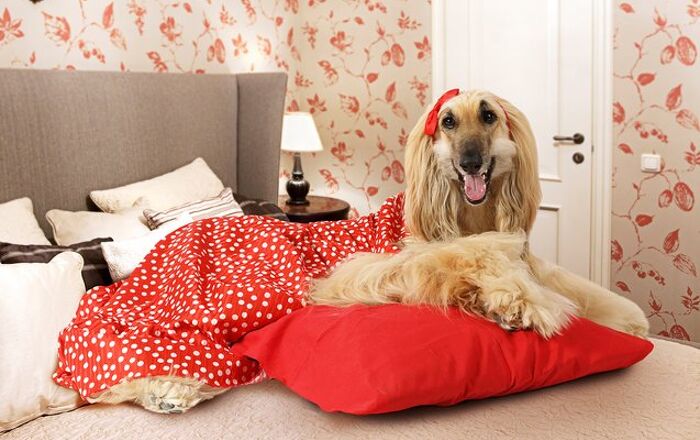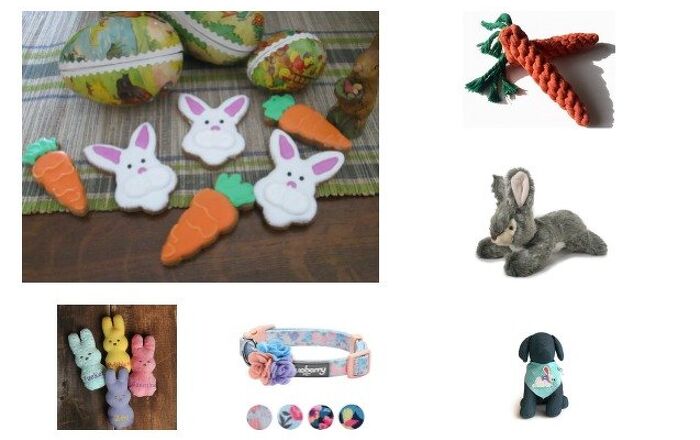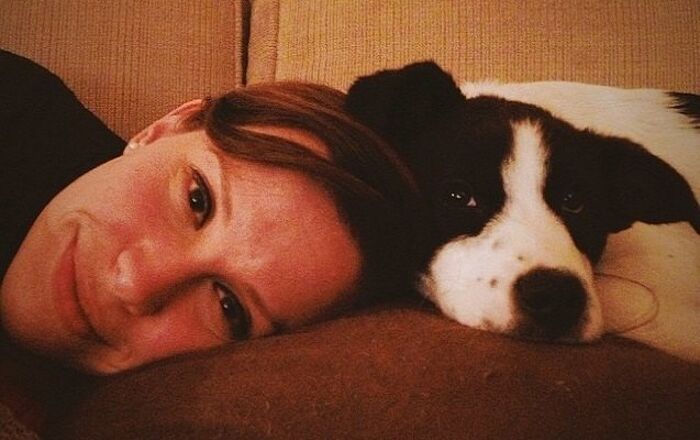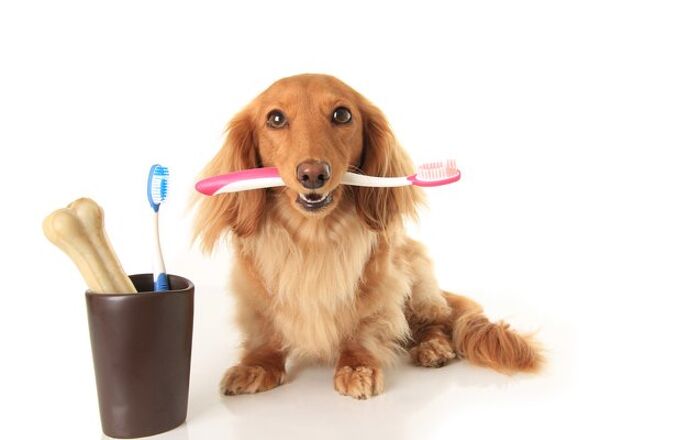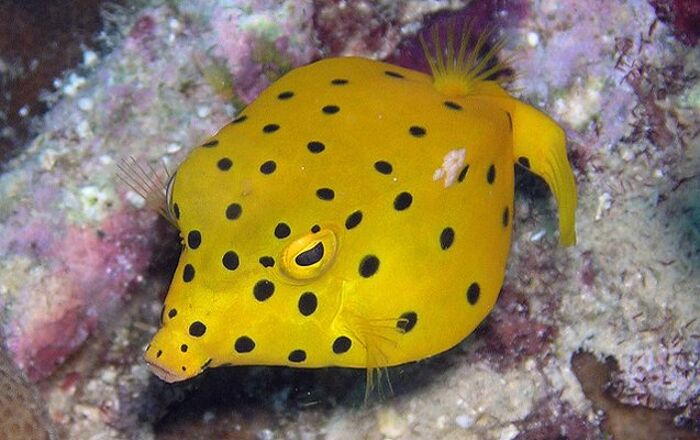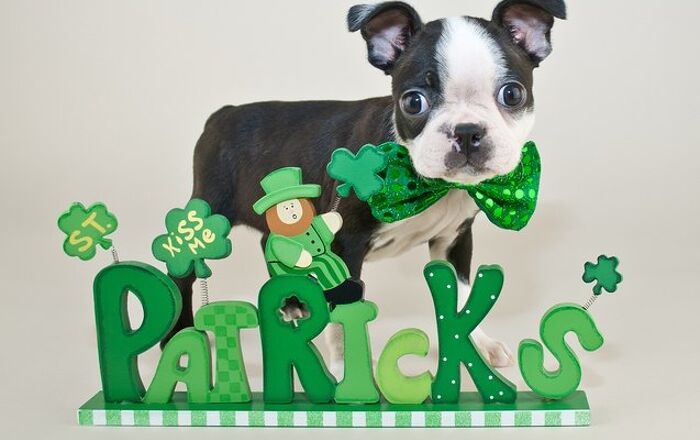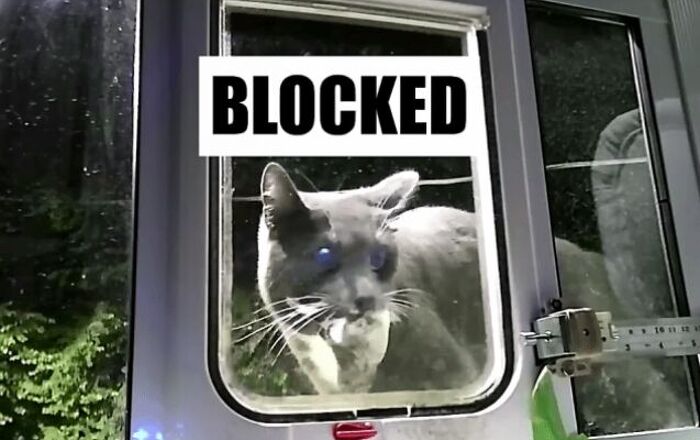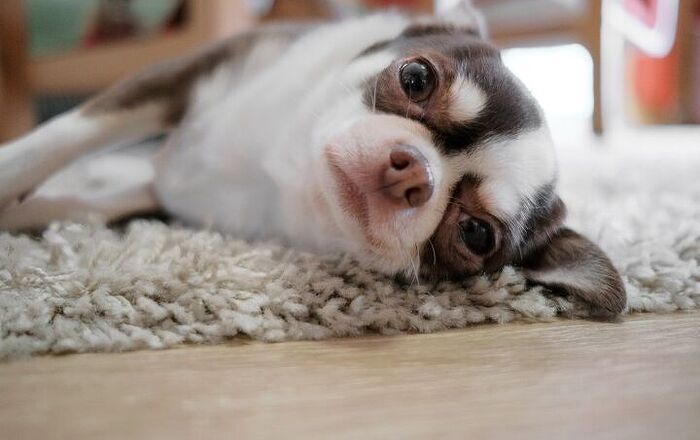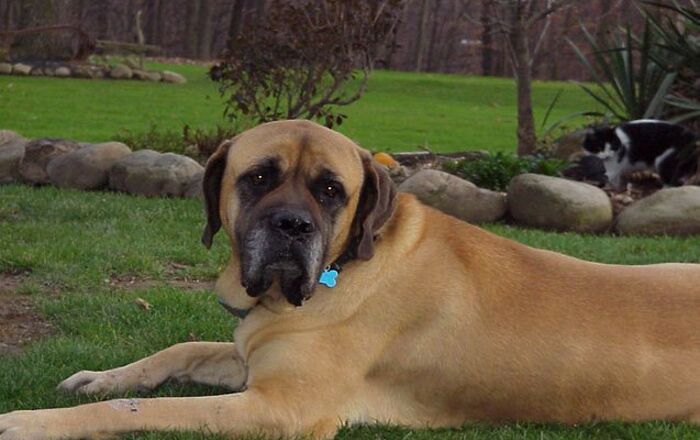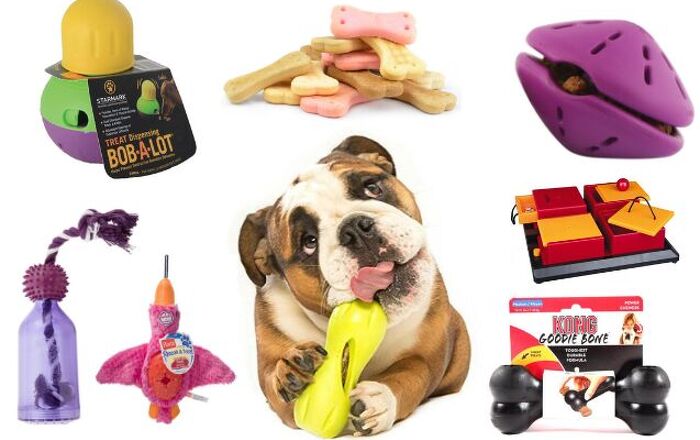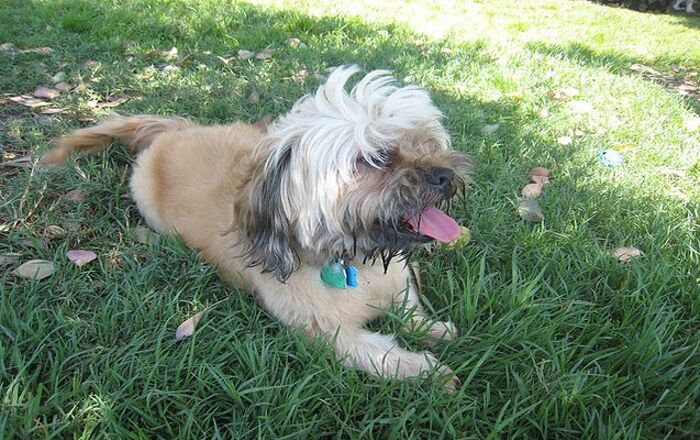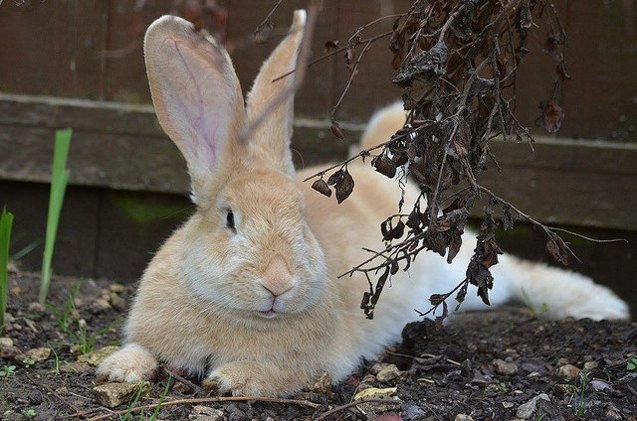
Continental Giant Rabbit Breed History/Origin
One of the oldest and largest rabbit breeds, experts suggest that the Continental Giant dates back to the middle of the 16th century. Many of these rabbits are descendants of the Flemish Giant from Belgium, but this breed also shares a heritage with other breeds, such as the Belgian Hare. However, it was not until 1893 that the first standards for Continental Giant Rabbits were written.
In the late 19th century, Continental Giants and Flemish Giants were sent to the United States from Europe and Britain in an effort to increase the size of rabbits that were being used for meat. As a result, Giant rabbit breeds were seen at small livestock shows, and they became popular as pet rabbits as well because they were naturally docile.
There are actually two varieties of the Continental Giant Rabbit, and they are the White Continental and the Colored Continental. Although the breed is recognized by the British Rabbit Council, it is not recognized by the American Rabbit Breeders’ Association.
You might have also come across the name Conti- which is an accepted nickname given to this majestic rabbit breed by their loving owners.
The Continental Giant is of the oldest and largest rabbit breeds.
Overall Description
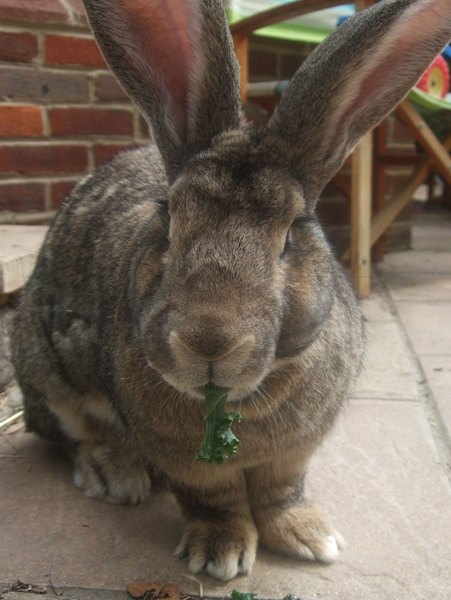
Because the Continental Giant is a rabbit that features a semi-arch body type, the arch of the back will start at the shoulders and continue to the base of the tail, giving the animal a mandolin shape.
The body of this breed will also be powerful and long, and there will be muscular and broad hindquarters, but the underline of the Continental Giant’s body should not feature a hare-like arch. The front legs should be sturdy, straight, and well-proportioned.
Males will feature a wide and large head that is larger than the head of females. Also, females will have an evenly spread and pronounced dewlap. The eyes on both males and females should be wide open, bright, and round, and the ears should be thick, robust, held upright, well covered, rounded, and long. The length of the ears should be roughly 25% of the length of the body. And you will also notice that the cheeks are well developed.
Coat
A Continental Giant’s fur will be glossy, dense, and thick. There will be guard hairs visible, and the undercoat will be soft and abundant, with a good amount of density as well.
You will need to groom your rabbit regularly in order to keep the coat healthy. Also, large rabbit breeds sometimes have trouble keeping themselves clean, particularly when they get older, so you will need to take steps to ensure your Continental Giant is always clean.
Colors
This breed can feature a variety of colors that include light gray, steel gray, fawn, sandy, black, and white.
A Continental Giant’s fur will be glossy, dense, and thick.
Care Requirements
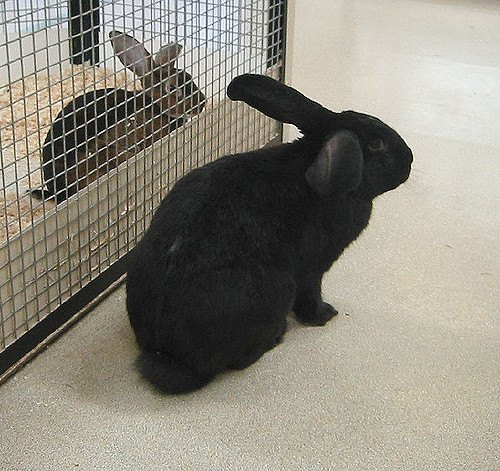
Because of its large size, the Continental Giant will do best in a house that has plenty of space. You can give your pet a large dog crate so that he will have a hideaway to relax in and retreat to, but this should only be a temporary solution. While having a lot of space to hop about freely and explore is a must for a big rabbit such as the Conti, they still need a home of their own.
For this purpose, you can choose a spacious rabbit cage, made from natural, rabbit-safe materials or coated aluminum wires. The bottom of the cage shouldn’t be made from wire, though, as this could seriously hurt your rabbit’s feet and cause issues such as sore hocks. Instead, opt for solid flooring, lined with bunny-safe bedding.
The best bedding for Continental Giant is the one used for most other rabbit breeds and that’s straw or hay. Alternatively, wood and paper pellets or shredded cardboard could do the trick. The bedding should be frequently replaced to ensure good hygiene and eliminate unpleasant odors in the cage.
If you decide to give your bunny free reign of your home, keep in mind that these rabbits will chew on household items, so it is best to rabbit-proof your home so that your pet will not end up destroying everything from papers and shoes to wires and furnishings. Also, potty training your bunny is a fantastic idea- and with a bit of patience, the Continental Giant will learn where to do his business. This will make cleaning up after your pet so much easier! Providing your indoor rabbit with some time to play in your safe and secure outdoor garden is also a good idea. Just make sure to supervise them during the playtime, as they are vulnerable to many predators.
In case you are planning on giving your Continental Giant the chance to live in the great outdoors, make sure that his hutch is large enough to accommodate your pet’s size. You can even provide your rabbit with a garden shed that is ventilated, has natural light, and is secure.
In terms of nutrition, you should give your Continental Rabbit a diet that has variety. Include high quality rabbit pellets and hays, along with fibrous vegetables, for a well-balanced nutrition. Hay will make up the most of your pet’s diet, but nutritious pellets and leafy greens are an equally important part of a Continental Giant’s meal plan. In addition, you should make sure that your pet always has access to fresh, clean water.
Health
In general, the Continental Rabbit is a healthy breed, but there are certain issues that affect them and that are common for bunnies of their size. For instance, while sore hocks are a risk for any rabbit housed in a cage with inadequate flooring, the heavy Conti will develop this condition much more easily than a smaller bunny. Additionally, these large bunnies need a lot of space to stay healthy and content- housing them in a cramped cage will bring about a host of health issues; both mental and physical.
Then, there’s the issue of overgrown teeth. Just like other rabbit breed, the Continental Rabbit could develop dental problems because the teeth continually grow. When they live as pets, they need our assistance to be able to grind them down to an acceptable level. Providing your pet with roughage and chew toys will help keep the teeth worn down.
Hay should be the main part of your pet’s diet both for its nutritional qualities and the fact that keeps plenty of issues at bay. In addition to assisting with teeth filing, hay will help with the passing of hairballs and work to prevent intestinal blockage. GI Stasis is a deadly issue that affects all rabbits which is why prevention and monitoring are very important. Proper grooming, a diet based on hay and inspection of your pet’s feces for “pearl string poop” are the best course of action.
When speaking of diet, you should also make sure to keep servings within the recommended size. You don’t want your pet to become obese, as Continental Giants are at risk for serious health issues when they are overweight. Excess weight will make grooming even more difficult for your large rabbit, and being overweight will also make him more susceptible to flystrike.
The Continental Giant is intelligent, friendly, and easy to train.
Temperament/Behavior
Known as gentle giants, Continental Giant Rabbits are intelligent, friendly, and easy to train. They will play games, can be trained to use a litter tray, and will even respond when their name is called.
A lot of people who keep these rabbits as pets will describe them as acting much like dogs, but in order for these animals to feel relaxed around people, they need to be handled frequently while they are young, and they need to be handled gently.
Because they are so large, Continental Giants might not be the right choice for inexperienced owners and kids. They need to be handled carefully in order to prevent injuries, and you also need to know how to pick up and hold a large rabbit without frightening him. This will also make grooming and flystrike inspection an easy, pleasant task instead of the ordeal it can become when a large rabbit isn’t accustomed to handling.
Photo credit: Anna Hull/Flickr; Franie Frou Frou/Flickr; maiagreen/Flickr

